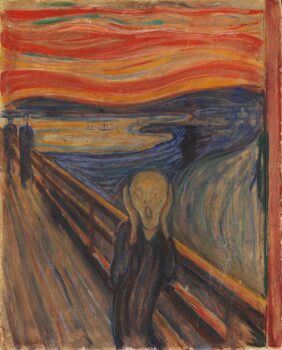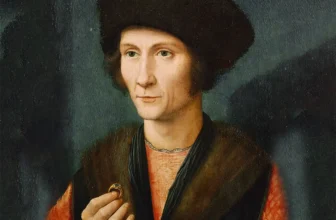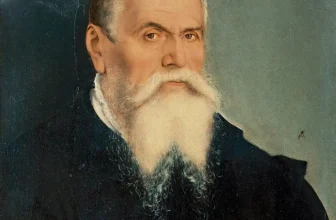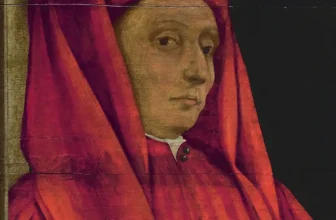Meaning of The Scream by Edvard Munch
Edvard Munch’s The Scream is one of the most iconic paintings in art history. Its haunting figure, distorted landscape, and vivid colors have captivated the imagination of art lovers, historians, and critics for over a century. This masterpiece, often described as the visual embodiment of anxiety, has transcended its cultural origins in Norway to become a universal symbol of modern existential dread. But what exactly is The Scream all about? Who painted it and how? What artistic style does it represent, and where is it located today? This in-depth exploration delves into the story behind The Scream, its creation, its meaning, and its continued relevance.
Origins of The Scream and the Life of Edvard Munch
To understand The Scream, we must begin with the life of its creator. Edvard Munch (1863–1944) was a Norwegian painter and printmaker whose work played a crucial role in the development of German Expressionism in the early 20th century. His style was deeply personal, often drawing from his own life experiences and psychological struggles.
Munch’s life was marked by illness, death, and emotional turmoil. His mother died when he was just five, and his favorite sister died of tuberculosis when he was 14. His father, a deeply religious man, died when Munch was 15. These early losses instilled in him a sense of melancholy and existential anxiety that would pervade his art.
Munch once wrote:
“Illness, insanity, and death were the black angels that kept watch over my cradle.”
These themes, death, isolation, fear, anxiety, form the foundation of The Scream and much of his artistic output.
The Creation of The Scream
The Scream was first conceived in 1893 and is part of a series Munch called The Frieze of Life, which explored themes of love, fear, death, and melancholy. Interestingly, there are four known versions of The Scream created between 1893 and 1910: two paintings, one pastel, and one lithograph.
The most famous version, painted with oil, tempera, and pastel on cardboard, is housed in the National Gallery in Oslo, Norway. Another painted version is in the Munch Museum, also in Oslo. The pastel version sold at auction in 2012 for nearly $120 million, making it one of the most expensive artworks ever sold.
Munch painted The Scream after experiencing a panic attack while walking along a fjord at sunset. In his own words, from a journal entry dated January 1892, he described the moment that inspired the painting:
“I was walking along the road with two friends – the sun was setting – suddenly the sky turned blood red – I paused, feeling exhausted, and leaned on the fence – there was blood and tongues of fire above the blue-black fjord and the city – my friends walked on, and I stood there trembling with anxiety – and I sensed an infinite scream passing through nature.”
This autobiographical account is essential to understanding the painting, it was born from a moment of raw, emotional vulnerability.
What Is Happening in The Scream?
At first glance, The Scream appears deceptively simple. A lone figure, androgynous and ghost-like, stands on a bridge or walkway, clutching their face in a moment of extreme emotional anguish. Behind the figure, two shadowy people walk calmly away, indifferent to the figure’s distress. The landscape is surreal and distorted, with swirling lines, a fiery red sky, and a distant fjord or cityscape.
The image captures a psychological experience more than a literal event. The central figure is not screaming outwardly, it is reacting to a scream perceived in the environment or within itself. The landscape itself seems to be alive, pulsating with anxiety. This merging of figure and environment represents the collapse of boundaries between the self and the world, emphasizing the intensity of the emotional experience.
The painting is not about physical terror or an external event. Rather, it depicts internal terror, a psychological moment of panic or existential dread that becomes all-consuming.
Symbolism and Meaning of The Scream
One of the reasons The Scream has remained so powerful is its rich symbolism and its ability to speak across cultures and generations. Here are some of the most significant symbolic elements in the painting:
1. The Central Figure
The ghostly, almost skeletal person is deliberately ambiguous in gender and age. This allows viewers to project their own emotions onto the figure. The pose, hands over ears, mouth agape, is one of desperation and helplessness. The figure could be trying to block out the scream or expressing it.
Some interpretations suggest the figure represents Munch himself, caught in a moment of psychological breakdown. Others see it as the modern human being, alienated from nature, other people, and even themselves.
2. The Red Sky
The blood-red sky is a striking element. Some scientists and art historians have speculated that it may have been inspired by real events, possibly a volcanic eruption (such as Krakatoa in 1883) that caused vivid sunsets in Europe for years. But symbolically, it reflects emotional chaos, destruction, and anxiety. The sky almost appears as if it is bleeding or on fire, reinforcing the painting’s apocalyptic tone.
3. The Bridge
The bridge symbolizes transition, a crossing from one state of being to another. In The Scream, it may represent the thin boundary between sanity and madness, or the divide between the individual and society. The figure is trapped between these forces, caught in a moment of existential crisis.
4. The Background Figures
The two figures walking behind the screamer are thought to be Munch’s friends from his journal entry. Their lack of engagement with the distressed figure enhances the sense of isolation. It reflects the idea that profound emotional pain can be invisible to others, that the internal suffering of one person can be utterly solitary.
5. The Landscape
The swirls and waves in the painting reflect the unstable inner state of the central figure. The landscape itself seems to echo the scream, blurring the line between external and internal reality. Munch uses expressionistic distortion to externalize emotion, making the environment a mirror of the mind.
What Kind of Art is The Scream?
The Scream is a hallmark of Expressionism, an artistic movement that sought to express emotional experience rather than physical reality. While the painting predates the formal rise of German Expressionism, it heavily influenced the movement and is considered a foundational piece.
Expressionism is characterized by the use of bold colors, exaggerated forms, and distorted perspectives to convey emotional truth. In The Scream, Munch breaks away from the realism of the 19th century to create a symbolic representation of anxiety, fear, and alienation.
At the same time, The Scream also carries elements of Symbolism, an art movement that emphasized the representation of inner states and mystical ideas. Munch himself was influenced by Symbolist poetry and literature, and his paintings often aimed to evoke universal human experiences.
What Does The Scream Painting Represent?
The Scream is about existential angst, the sudden, overwhelming realization of one’s own vulnerability in a vast, indifferent universe. It’s about the silent terror of being alive, the psychological weight of consciousness, and the emotional fragility of the human condition.
It has been interpreted in various ways:
Psychological interpretation: The painting captures a panic attack or anxiety disorder.
Existential interpretation: It reflects the loneliness and dread of modern life.
Social interpretation: It critiques a society that is indifferent to individual suffering.
Spiritual interpretation: It shows a soul in crisis, disconnected from meaning or divine order.
In each interpretation, the core message remains the same: the scream is not just a sound, it’s a state of being.
Cultural Impact
Few paintings have had as profound an impact on global culture as The Scream. It has been referenced in countless films, books, television shows, and even emojis. The image of the screaming figure has become a universal symbol of horror, anxiety, and despair.
Andy Warhol created a silkscreen print of The Scream in his series of reimagined masterpieces. The image was parodied in The Simpsons, Home Alone, and Doctor Who. The scream emoji (😱) draws directly from Munch’s figure.
Beyond popular culture, The Scream has been studied in psychology, philosophy, and even neuroscience. Its raw portrayal of emotion makes it an object of fascination across disciplines.
Where is The Scream Located Today?
There are four main versions of The Scream, all created by Munch himself:
1893 (Oil, tempera, pastel on cardboard) – Located at the National Gallery in Oslo, Norway.
1893 (Pastel) – Privately owned. Sold at Sotheby’s for nearly $120 million in 2012.
1895 (Lithograph) – Prints of this version are held in several museums, including MoMA in New York.
1910 (Tempera on board) – Located in the Munch Museum in Oslo, Norway.
In 2004, the Munch Museum’s version was stolen in a bold daylight robbery but was recovered in 2006. The National Gallery’s version was stolen in 1994 and recovered the same year. These incidents only added to the painting’s mystique and notoriety.
Today, The Scream remains on display in Oslo, with the Munch Museum serving as a comprehensive repository for Munch’s art and legacy.
The Scream endures not just because of its unique style or shocking visuals but because it taps into something deeply human. It is a mirror of our most private fears, an eternal expression of inner turmoil in an uncertain world. Through bold lines, distorted shapes, and emotional resonance, Edvard Munch created a painting that continues to speak to every generation.
In a world that often seems increasingly chaotic and disconnected, The Scream remains a reminder that we are not alone in our anxieties, that others have felt this way too, and that art can give shape to even the most inexpressible parts of the human soul.
Whether seen as a personal cry, a philosophical statement, or a cultural icon, The Scream continues to echo through time, an infinite scream passing through nature, and through us all.




